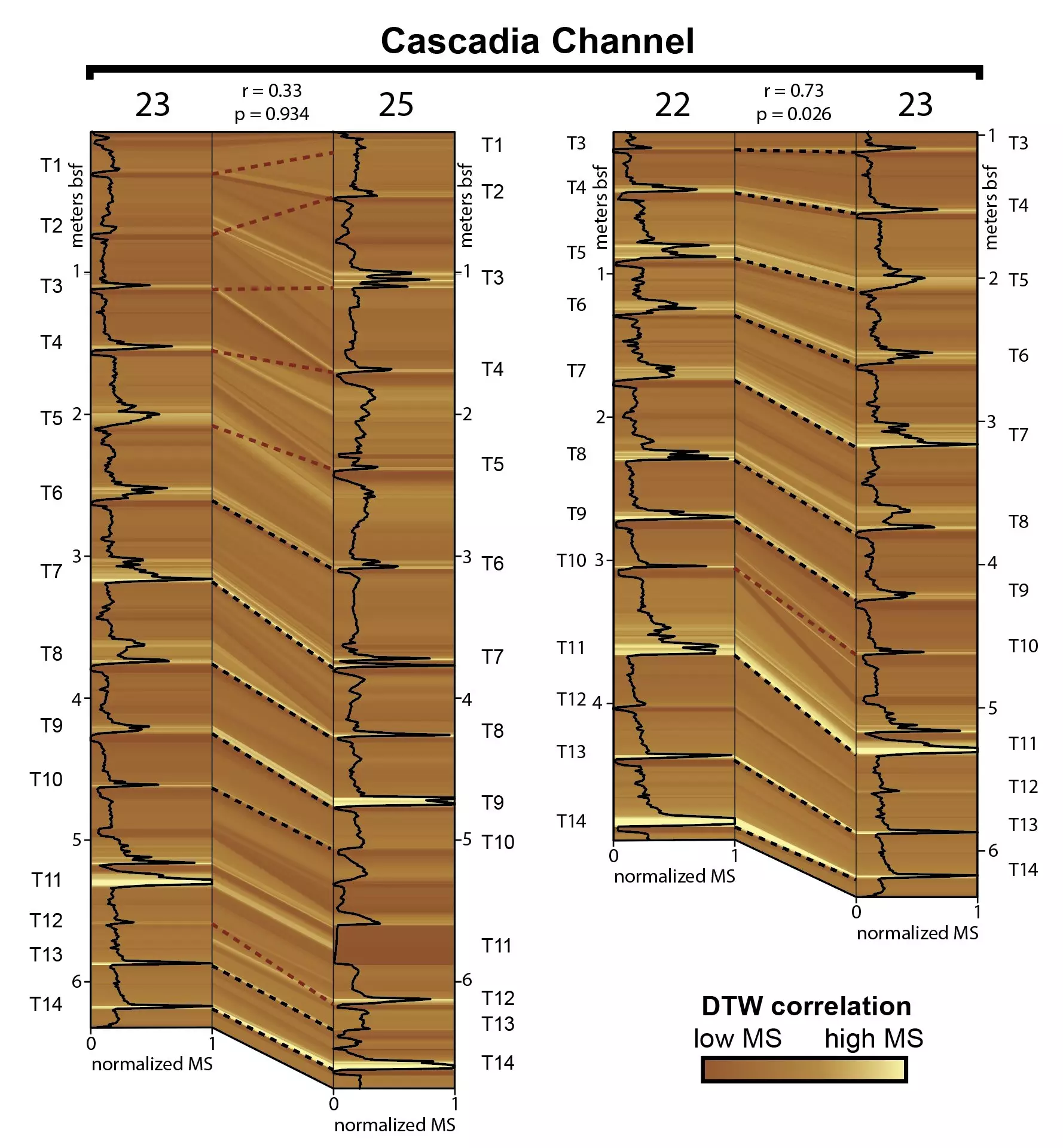The Cascadia subduction zone, a seismic hotspot located off the coast of the Pacific Northwest, has a troubling history of generating major earthquakes that have led to widespread devastation, transforming landscapes and catastrophically affecting coastal communities. Notably, the last significant quake recorded occurred in 1700, yet the potential for future seismic activity remains a pressing concern as urban areas now teem with millions of residents. This dilemma raises crucial questions about the probability of future earthquakes and the methodologies scientists employ to quantify this risk.
In the quest to predict seismic events, researchers often turn to geological indicators from the past. The turbidites, which are sedimentary deposits left behind by underwater landslides, are particularly important. These layers accumulate over time, trapping geological and environmental information within their structure. Traditional methods of establishing links between turbidite deposits and historical earthquakes have relied heavily on qualitative assessments, which carry a significant margin of error. Recent research led by scientists from The University of Texas at Austin, and involving collaboration with multiple institutions, challenges long-held assumptions about the reliability of these geological markers when attempting to reestablish an earthquake timeline.
By analyzing prototypical turbidite layers dating back approximately 12,000 years, researchers employed a machine learning algorithm—dynamic time warping—to evaluate the similarities and correlations between the various turbidite samples. The findings revealed a staggering lack of consistency: the connections across most samples correlated no better than random chance. This uncertainty is pivotal, as it highlights that turbidite formations can stem from numerous geological triggers, including not only earthquakes but also storms and other natural events.
The groundbreaking study does not imply a change in the estimated frequency of earthquakes in Cascadia—generally accepted to be around every 500 years. Instead, it emphasizes the precariousness of the current methodologies used to connect geological data to past seismic events, spurring questions about the interpretations that guide urban planning and emergency response strategies. Joan Gomberg, a co-author of the study from the U.S. Geological Survey, states, “We want everyone who references the sequenced intervals of Cascadia earthquakes to understand that these timelines are being questioned.” She advocates for further exploration to refine our understanding of the interval between earthquakes and better prepare communities for potential future disruptions.
The study’s co-author, Jacob Covault, underscored the importance of utilizing quantitative tools in geological research, articulating the need for reproducible methods that can be universally applied in the analysis of ancient earthquake records. This quantitative approach could provide a more reliable foundation for scientists seeking to analyze and predict seismic activity patterns.
Establishing definitive correlations among turbidites across extensive geographic areas proves to be a complex task. The research found that layers located closer together—within approximately 15 miles—showed stronger connections, suggesting that local geological factors significantly influence how turbidites deposit and preserve their character. The inherent variability in turbidite formation processes imposes additional challenges. As outlined by co-author Nora Nieminski, variations can distort the characteristics identifiable within turbidite layers, complicating efforts to link them back to specific seismic events.
The researchers also used a control method, comparing real correlations against randomly generated data as a baseline to mitigate false positives that might arise in the correlations obtained from actual samples. This method not only reinforced the findings but also underscored the necessity for robust statistical frameworks in geological evaluations.
In light of these revelations, it is essential for the field of geosciences to evolve and incorporate more sophisticated analytical strategies, such as machine learning methods, to interpret complex datasets. The study’s results point towards an urgent need for enhanced methodologies to help scientists uncover the intricacies of turbidite formations and their relation to seismic events. Zoltán Sylvester, another co-author, highlights that while the algorithm represents one avenue for analysis, geoscientists must also delve into broader data interpretations to present comprehensive answers regarding the past and future of earthquake activity.
The Cascadia subduction zone’s seismic history reveals the paramount importance of ongoing research into earthquake prediction methodologies. As urban areas expand into geologically active regions, it becomes increasingly crucial to develop reliable predictive models. The current study not only questions accepted methodologies but pushes the scientific community to reconsider how best to anticipate and respond to future geological threats, emphasizing the need for resilience in the face of inevitable seismic events.


Leave a Reply